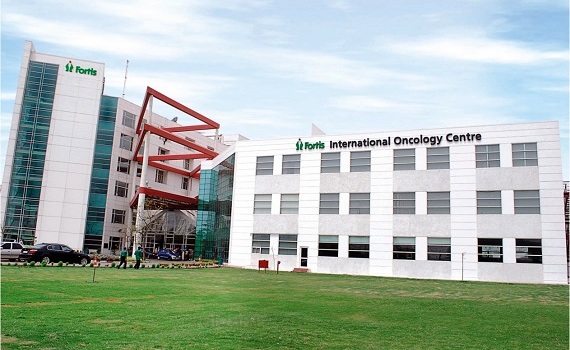Corrective Osteotomy and Fixation & Ligament Reconstruction Surgery Treatment in India
treatment
starting from
Introduction
Our musculoskeletal system plays a vital role in maintaining our mobility and overall well-being. However, injuries, congenital disorders, and degenerative conditions can sometimes disrupt the proper alignment and stability of our bones and joints, leading to pain and reduced functionality. In such cases, corrective osteotomy and fixation & ligament reconstruction surgery emerge as powerful solutions to restore normalcy and enhance quality of life. In this comprehensive blog, we will delve deeper into the intricacies of these surgeries, exploring their significance, procedures, and recovery aspects. By understanding these surgical interventions, patients can make informed decisions about their healthcare journey, and medical professionals can optimize patient care and outcomes.
1. Understanding Corrective Osteotomy
Corrective osteotomy is a surgical procedure designed to address bone deformities and malalignment issues. The primary objective is to realign the bone and correct its positioning to improve joint function and alleviate discomfort. This surgical approach is often recommended when non-surgical interventions fail to provide sufficient relief or when the deformity adversely affects the patient's mobility and overall health.
The Procedure:
- Preoperative Assessment: Prior to the surgery, a comprehensive evaluation of the patient's medical history, physical examination, and imaging studies (X-rays, CT scans, or MRI) is conducted to determine the extent of the deformity and plan the corrective strategy.
- Anesthesia: The patient is given general or regional anesthesia to ensure a pain-free and comfortable surgical experience.
- Incision: A carefully planned incision is made at the site of the affected bone to access the deformity accurately.
- Bone Cutting and Realignment: The surgeon performs controlled cuts (osteotomies) on the bone, allowing for precise adjustments to the bone's alignment. Sophisticated tools, such as computer-assisted navigation systems, may aid in achieving optimal precision.
- Fixation: To secure the corrected bone position, specialized fixation devices, such as plates, screws, or external fixators, are employed. These devices provide stability during the healing process.
- Incision Closure: After the bone is aligned and stabilized, the incision is meticulously closed, promoting proper wound healing.
Conditions Treated with Corrective Osteotomy:
- Malalignment of long bones, such as the femur and tibia, often due to congenital disorders or acquired injuries.
- Hip dysplasia, where the hip joint socket is abnormally shallow, leading to instability and pain.
- Deformities associated with osteoarthritis, rheumatoid arthritis, and avascular necrosis.
- Bowlegs (varus deformity) and knock-knees (valgus deformity) that cause an abnormal gait pattern and discomfort.
2. Fixation & Ligament Reconstruction Surgery
Fixation & ligament reconstruction surgery is a specialized procedure that addresses severe ligament injuries, particularly those that cannot be adequately treated through non-surgical methods. Ligaments are tough, fibrous connective tissues that link bones together, providing stability to joints. Injuries to ligaments can range from mild sprains to complete tears, significantly impacting joint stability and function.
The Procedure:
- Initial Examination: The surgeon conducts a thorough evaluation of the injured joint, which may include imaging studies (MRI or ultrasound), physical assessment, and a review of the patient's medical history.
- Anesthesia: To ensure patient comfort during the procedure, anesthesia (general or regional) is administered.
- Incision and Exploration: A carefully planned incision is made to access the damaged ligament and the affected joint.
- Ligament Repair or Reconstruction: Depending on the extent of the injury, the surgeon may opt for ligament repair or reconstruction. In ligament repair, the torn ligament ends are sutured back together. In reconstruction, a graft, sourced from the patient's own body (autograft) or a donor (allograft), is used to replace the damaged ligament.
- Graft Fixation: The graft is secured in place using various fixation techniques, such as screws, interference fit devices, or sutures, allowing it to integrate with the surrounding tissues and assume the role of the injured ligament.
- Incision Closure: After completing the necessary repairs or reconstruction, the incision is carefully closed to promote healing.
Common Ligament Reconstruction Surgeries:
- Anterior Cruciate Ligament (ACL) Reconstruction: A common surgery to repair a torn ACL, which frequently occurs in sports-related injuries.
- Posterior Cruciate Ligament (PCL) Reconstruction: Addresses tears of the PCL, usually resulting from high-energy trauma like car accidents or sports injuries.
- Medial Collateral Ligament (MCL) Reconstruction: Repairs the torn MCL in the knee, often encountered in contact sports injuries.
- Rotator Cuff Repair: Targets the rotator cuff tendons in the shoulder, frequently injured due to overuse or traumatic events.
Importance of Physical Therapy and Rehabilitation
Both corrective osteotomy and fixation & ligament reconstruction surgeries involve significant tissue trauma and healing. While the surgical procedures are essential for restoring normal function, successful recovery largely depends on the post-operative rehabilitation process. Physical therapy plays a pivotal role in this aspect, aiming to enhance strength, flexibility, joint stability, and overall function.
The Rehabilitation Process:
- Initial Recovery Phase: After surgery, patients may need to use assistive devices like crutches or braces to protect the affected area and promote healing.
- Pain Management: Pain medications may be prescribed to manage discomfort during the initial recovery phase.
- Physical Therapy: A tailored physical therapy program is initiated, involving exercises to improve range of motion, muscle strength, and joint stability. Therapists guide patients through progressive rehabilitation, closely monitoring their progress and making necessary adjustments.
- Weight-Bearing Progression: As healing progresses, the patient gradually starts weight-bearing activities to improve bone density and joint stability.
- Return to Normal Activities: The timeline for returning to regular activities and sports varies depending on the individual's progress, the specific surgery performed, and the nature of their physical demands.
Conclusion
Corrective osteotomy and fixation & ligament reconstruction surgeries have revolutionized orthopedic care, providing effective solutions to complexq bone deformities and severe ligament injuries. These surgical interventions, when complemented with thorough preoperative assessments and comprehensive rehabilitation, enable patients to reclaim their mobility, restore joint function, and regain an active lifestyle.
As with any medical procedure, informed decision-making and open communication with healthcare professionals are crucial. Patients should actively participate in the treatment planning process, seeking second opinions if necessary, and diligently follow the prescribed rehabilitation protocols to optimize their recovery outcomes.
By embracing the advancements in orthopedic surgery and post-operative care, individuals can confidently take steps towards a brighter and more mobile future. Remember, your orthopedic health is an invaluable asset; investing in its restoration is an investment in a more fulfilling life.
How It Works
Need help in organizing medical travel to India?









